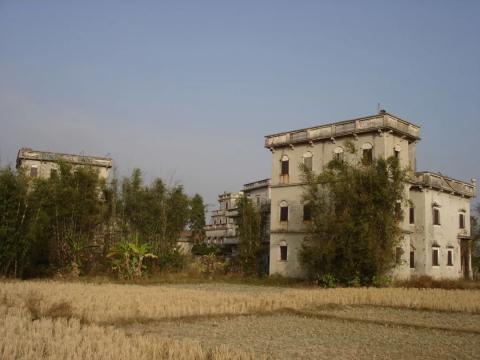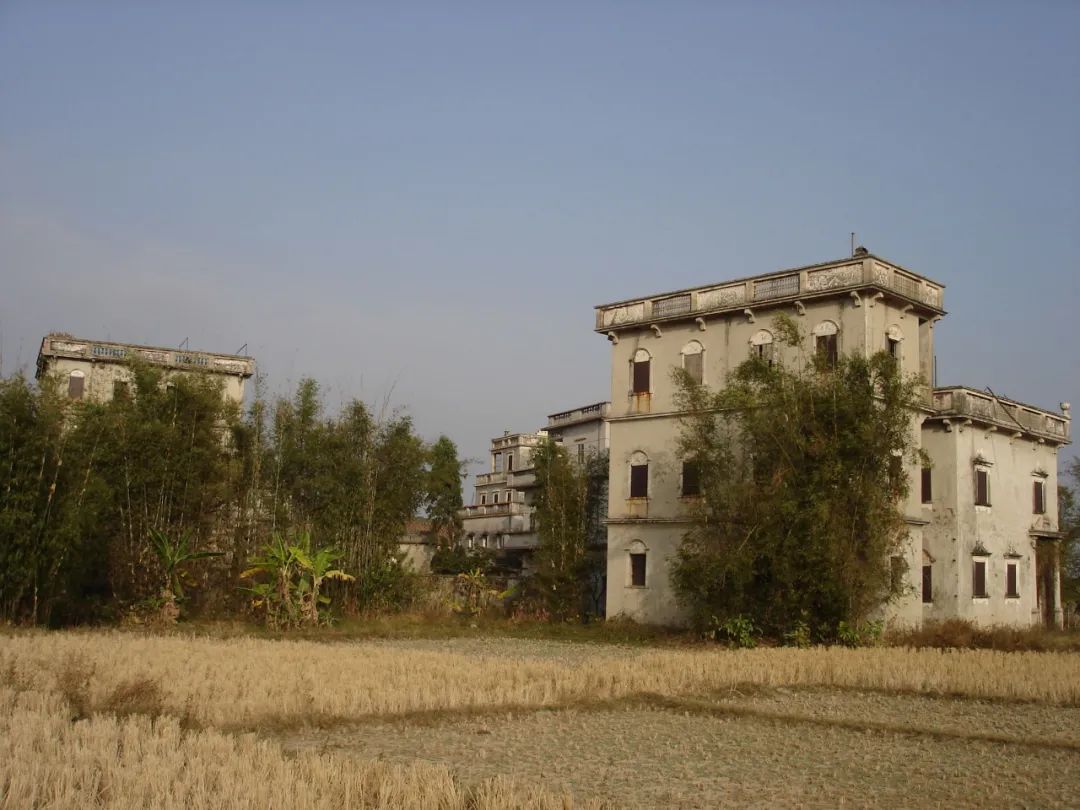
Time: 2012 year 11 month 15 day
Location: Kaiping City, Guangdong Province
Jingxiang Travel Notes Chapter 28丨Kaiping Diaolou
In the 11 month of the New Calendar, although it is already early winter, it only feels like early autumn in Guangdong. The autumn harvest has just been completed, and the withered and yellow late rice stalks are still left in the ground.

In this quiet and peaceful land, rural houses that are very different from traditional Chinese architectural styles stand on the fields after the autumn harvest.
Approaching these houses that combine Chinese and Western styles, you will find that their structures not only have various styles such as ancient Greece, ancient Rome, and Islam, but


It is the ventilation vent of the residence, the watchtower for the villagers to watch out, and the shooting port for the villagers to defend themselves against thieves and bandits. This is the reason why Kaiping Diaolou is listed as a national key protected cultural relic - A group of multi-story tower-style buildings integrating defense, residence and Chinese and Western architectural art.
Diaolou, as the name suggests, is both a fortress and a building. What you need to know now is: Why is it that only Kaiping has this kind of architecture that combines Chinese and Western styles, but not the surrounding Enping, Taishan, Xinhui, or Heshan? Why does this kind of building that combines Chinese and Western styles appear in the form of watchtowers?
In places where life is comfortable, people are generally unwilling to go out to work because they can already have enough food and clothing at home. However, this is different in poor areas. Young people must go out to work in order to survive. Otherwise, the family will be hungry. Die at home.
At the end of the Ming Dynasty, the government was already corrupt, and Kaiping, which was in the "four no-mind" zone, was even more impoverished. Many young adults were forced to go out to make a living, thus creating Kaiping, a famous hometown of overseas Chinese.
However, the Chinese descendants always have a hometown complex that is difficult to let go. These overseas Chinese worked hard outside and behaved badly, so they began to miss their hometown and constantly donated money to build their hometown. They also brought Western architectural styles to this closed and backward area. soil of.

The gradually prosperous overseas Chinese in Kaiping attracted the attention of thieves and bandits. As the saying goes, "Poverty leads to thieves." This southern barbarian land was originally poor, and those who were lazy, incapable of making a living, and forced to desperation became thieves and bandits. When high-rise buildings were built in these villages, they became targets for robbery.
In order to protect themselves, the villagers transformed these Chinese and Western houses into fortifications, and then there were countless watchtowers with shooting ports. These shooting ports can not only ventilate the building, but also serve as a watchtower for sentries. Bandits can also shoot when they come. In short, watchtowers are the result of villagers' self-protection.
The tyranny of the Qin Dynasty triggered the Dazexiang Uprising of Chen Sheng and Wu Guang. The Yuan Dynasty's discrimination against the Han people forced Zhu Yuanzhang to rise up. The Chinese people are particularly tolerant. If the rulers give them a way to survive, even if it is a narrow path or a single-plank bridge, they will accept it in order to protect themselves. But if they lose even their basic right to survival, they will definitely take up arms to protect themselves. Kaiping Diaolou is a good example of this.

Self-preservation is human instinct, but it is not a human pursuit, but a kind of helplessness when the government cannot protect them. Zhu Yuanzhang hated corrupt officials the most and would kill every one he saw. He was the emperor who punished corrupt officials the most severely and firmly in all dynasties. However, he could not kill all the corrupt officials when he was in power, let alone the late Ming Dynasty when there were internal and external troubles? The imperial court was no longer able to take care of these remote and backward barbarian lands, so the villagers had no choice but to organize themselves to protect themselves.
The sunset gradually disappears, and as night falls, the past history is also submerged in the vast darkness, leaving only these buildings for future generations to trace their origins.
Next article preview: Do you dare to dance the bamboo pole dance of the Yao people? The next article will take you into Liannan Yao Autonomous County, taste the rice wine of Sanpai Yao Village, and participate in the dance at the bonfire party.
